Kansas City, MO Pollen and Allergy Report for Summer 2023
Pollen Allergy Trends in Kansas City, MO
When is pollen lowest in Kansas City, MO?

February
Lowest month total PPM
Avg. PPM
When is pollen highest in Kansas City, MO?

April
Highest month total PPM
Avg. PPM
How does pollen in Kansas City, MO compare to Missouri?
Kansas City has a higher average PPM than the state of Missouri.
Kansas City yearly avg PPM:
Missouri yearly avg PPM:
How does pollen in Kansas City, MO compare to the USA?
Kansas City has a higher average PPM than the USA.
Kansas City yearly avg PPM:
USA yearly avg PPM:
Is pollen worse this year in Kansas City, MO?
Spring 2023 was worse than spring 2022.
Spring 2023 PPM:
Spring 2022 PPM:
Average PPM in Kansas City, MO
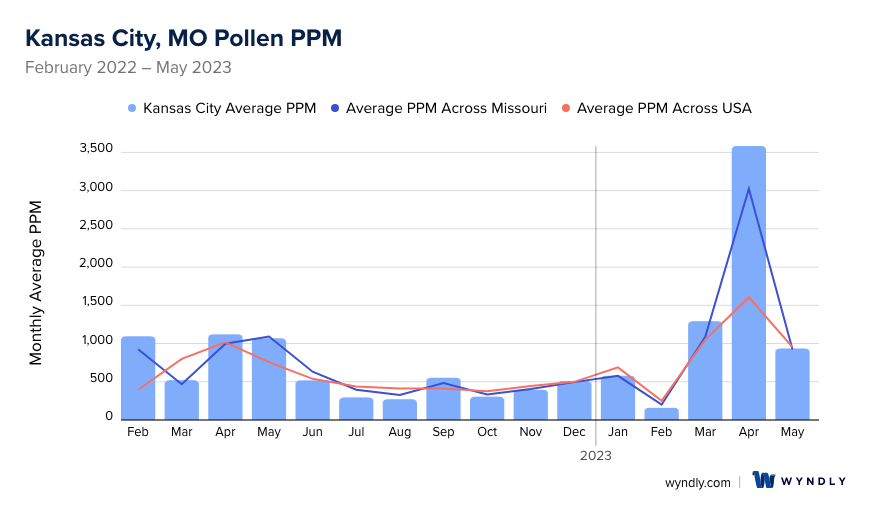
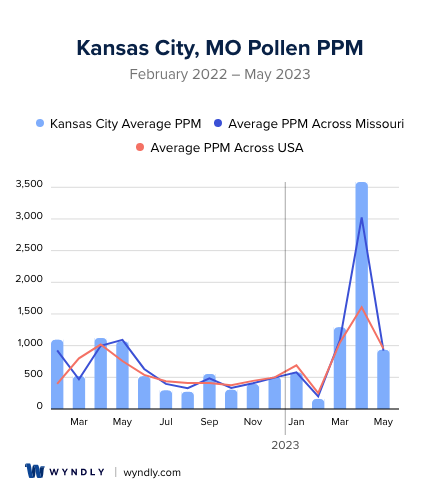
Kansas City, MO Pollen and Allergy Breakdown by Month
Grass
When is grass pollen highest in Kansas City, MO?
February has the highest grass pollen in Kansas City, MO with an average PPM of
When is grass pollen lowest in Kansas City, MO?
November has the lowest grass pollen in Kansas City, MO with an average PPM of
Tree
When is tree pollen highest in Kansas City, MO?
April has the highest tree pollen in Kansas City, MO with an average PPM of
When is tree pollen lowest in Kansas City, MO?
October has the lowest tree pollen in Kansas City, MO with an average PPM of
Weed
When is weed pollen highest in Kansas City, MO?
April has the highest weed pollen in Kansas City, MO with an average PPM of
When is weed pollen lowest in Kansas City, MO?
February has the lowest weed pollen in Kansas City, MO with an average PPM of
Kansas City, MO Pollen Monthly Breakdown by Pollen Type
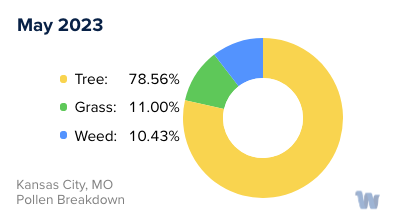
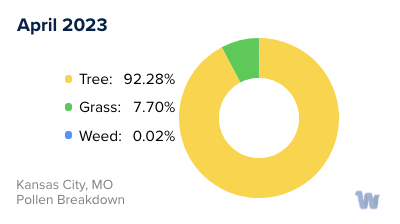
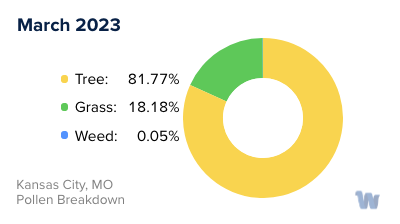
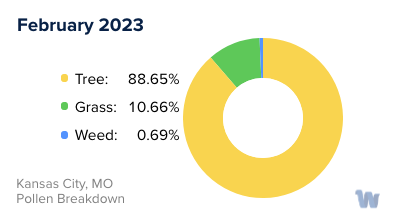
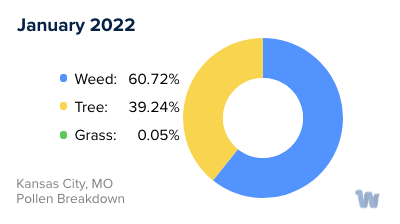
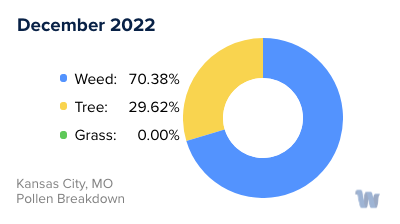
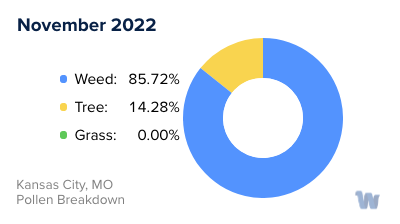
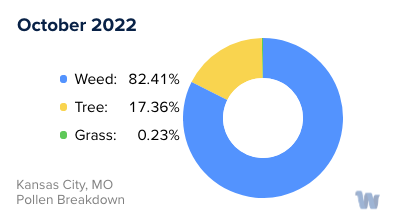
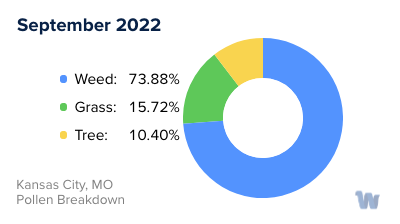
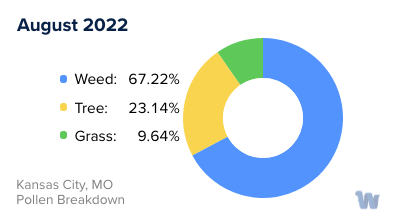
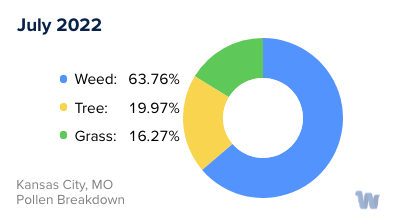
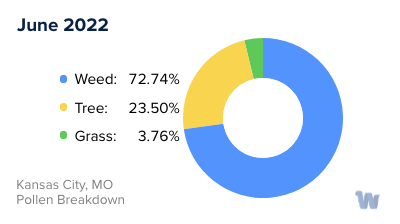
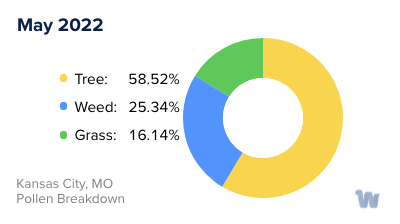
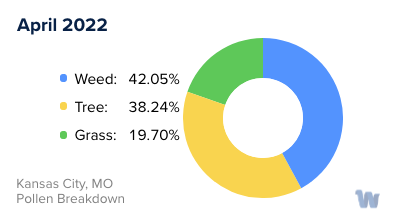
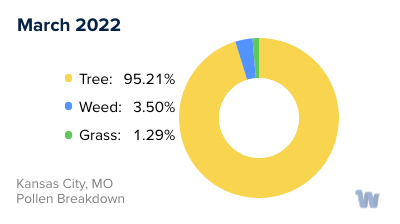
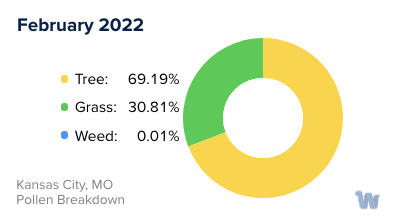
Pollen and Hay Fever in Kansas City, MO
Pollen allergies, often referred to as hay fever or allergic rhinitis, are a common concern for residents of Kansas City, Missouri. These allergies are triggered by tiny grains released into the air by trees, grasses, and weeds for the purpose of fertilization. Each type of pollen has a peak period of release which often corresponds to a specific season.
Kansas City's diverse vegetation contributes to a variety of pollen types. In the spring, the main culprits are tree pollens. The city's abundant oak, maple, and cedar trees begin to release their pollen, turning the air into a veritable allergenic cocktail. This can lead to sneezing, a runny nose, itchy eyes, and other common hay fever symptoms.
As the seasons change, so too does the type of pollen in the air. Grass pollen starts to rise in late spring and continues throughout the early summer. Grasses like Kentucky bluegrass, Timothy grass, and ryegrass are common throughout Kansas City and produce pollen that can be highly allergenic.
Late summer and fall bring another shift in the pollen landscape. This time, it's weed pollen that dominates, particularly ragweed. Ragweed pollen can travel long distances on the wind, and a single plant can produce up to a billion grains of pollen in a season, making it a significant trigger for hay fever symptoms.
Living in Kansas City, understanding the local pollen seasons can help residents better anticipate and manage their allergy symptoms. While the impact of pollen allergies varies from person to person, being aware of what's in the air and when can be the first step towards living comfortably with hay fever.


